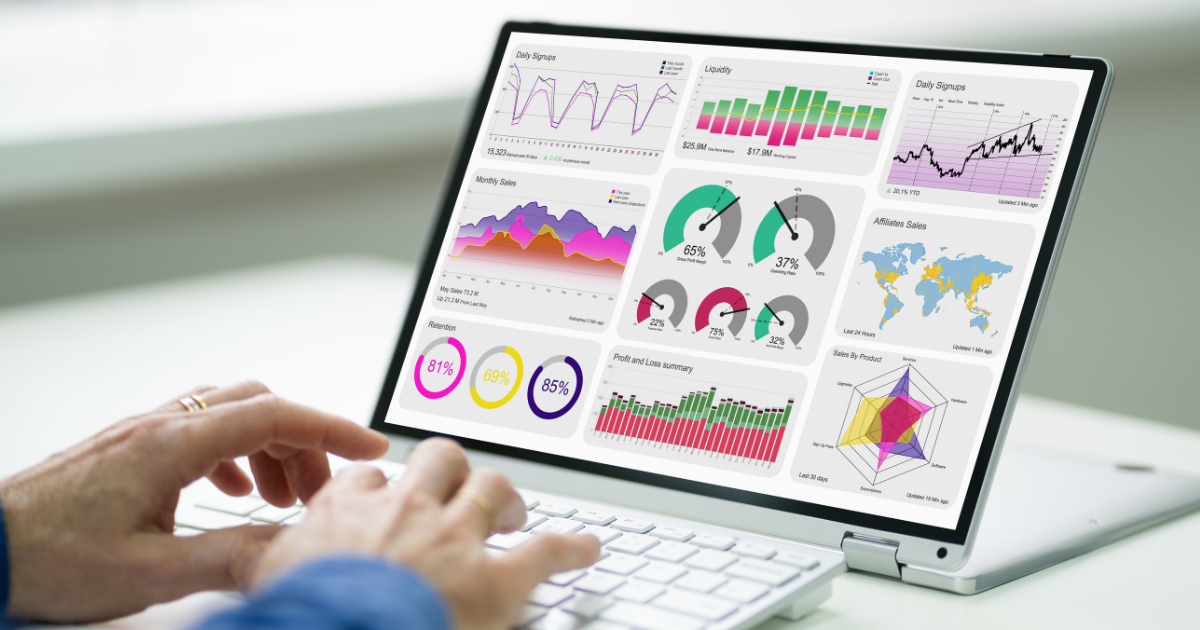As a manufacturing business owner or manager, you understand the importance of operational efficiency in achieving business success. One of the most effective ways to increase operational efficiency is by implementing manufacturing dashboards that provide real-time visibility into your data.
Unfortunately, only 39% of manufacturers have successfully scaled data-driven use cases beyond the production process of a single product and thus achieved a clearly positive business case. But that number is increasing significantly, and you’re primed to be one of the companies who benefits.
By using manufacturing dashboards, you can track and analyze key productivity metrics, such as production tracking, cycle time, and inventory management, to help you make better decisions and optimize your manufacturing processes.
In this article, we’ll explore the benefits of using manufacturing dashboards for Product Lifecycle Management (PLM) and inventory management, as well as how real-time data visibility and analytics can help you improve your operational efficiency and achieve continuous improvement.

A View into Your Data
Manufacturing dashboards provide a centralized view of your data, making it easy for you to monitor and track key performance indicators (KPIs) in real-time. By having access to this data, you can quickly identify areas that need improvement and take action to optimize your manufacturing processes.
For example, if you notice that your cycle time has increased, you can use your manufacturing dashboard to drill down into the data and identify the root cause of the issue. This may involve looking at specific workstations or machines, analyzing the production process, or identifying specific employees who may need additional training.
PLM Performance Insights
PLM dashboards provide a comprehensive view of your product development process, allowing you to track progress, manage workflows, and identify bottlenecks. With a PLM dashboard, you can track the status of each stage of product development, from ideation to product launch, and ensure that everyone involved in the process is working towards the same goals.
By using a PLM dashboard, you can streamline your product development process, reduce time to market, and improve collaboration between teams. You can also use your PLM dashboard to track key manufacturing metrics, such as production volume, quality, and costs, to ensure that your products are meeting customer demand and achieving profitability.

Inventory Optimization Analytics
Inventory Management dashboards provide real-time visibility into your inventory levels, allowing you to optimize stock levels, reduce stockouts and overstocks, and improve demand planning. With an inventory management dashboard, you can track inventory levels by SKU, location, and supplier, and identify trends and patterns in your inventory data.
By using an inventory management dashboard, you can ensure that you have the right products in stock at the right time, reduce carrying costs, and improve customer satisfaction. You can also use your inventory management dashboard to track key manufacturing metrics, such as lead time and order fulfillment, to ensure that your inventory is being managed efficiently.
Learn more about the Top 3 Ways to Reduce Manufacturer Inventory Stress

Real-time Data Visibility and Analytics
No matter the core data you’re looking at, across your processes, having access to real-time data and analytics are key components of manufacturing dashboards, allowing you to track and analyze data in real-time to identify trends and patterns.
By having access to real-time data, you can make better decisions, optimize your manufacturing processes, and identify areas for continuous improvement.
Imagine a manufacturer who was having issues with their inventory management. They frequently ran out of stock on some of their main components, resulting in lost sales and unhappy customers. To address this problem, they implemented a real-time inventory management system that allowed them to track inventory levels, monitor product demand, and forecast future needs.
By using the real-time data visibility and analytics provided, the manufacturer was able to identify which products were selling the most and when they were running low on stock. This allowed them to adjust their production schedules and ordering processes to ensure they always had enough inventory to meet demand. As a result, they were able to reduce their inventory carrying costs, increase their on-time deliveries, and improve their customer satisfaction ratings.
This helped them stay competitive in the highly competitive manufacturing industry and maintain their reputation as a reliable supplier to their customers.

Operational Efficiency and Continuous Improvement
By using manufacturing dashboards for PLM and inventory management, as well as real-time data visibility and analytics, you can achieve operational efficiency and continuous improvement. It is important though to choose the right software for your needs.
One of our clients, Timberline Instruments, said Parts Dashboard is a “Window into my production facility” because of the importance put on the insightful data visibility.
With real-time visibility into your data like this, you can identify areas for improvement, make data-driven decisions, and optimize your manufacturing processes.
By achieving operational efficiency, you can reduce costs, increase profitability, and improve customer satisfaction. You can also achieve continuous improvement by using manufacturing dashboards to track and analyze data over time, identifying trends and patterns, and taking action to improve your manufacturing processes. So, don’t hesitate to invest in manufacturing dashboards today and start reaping the benefits.



